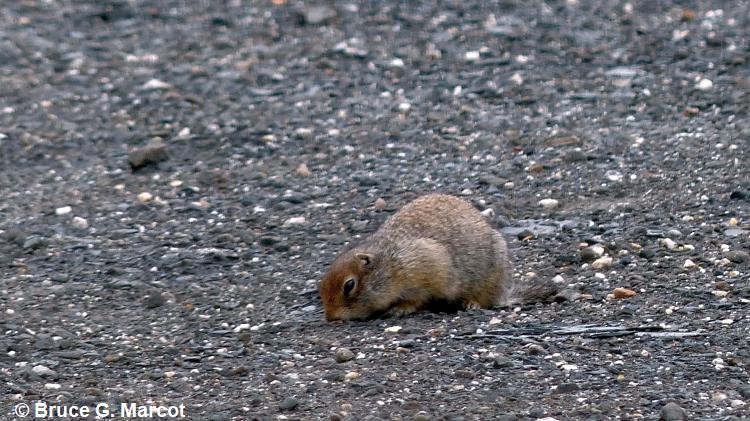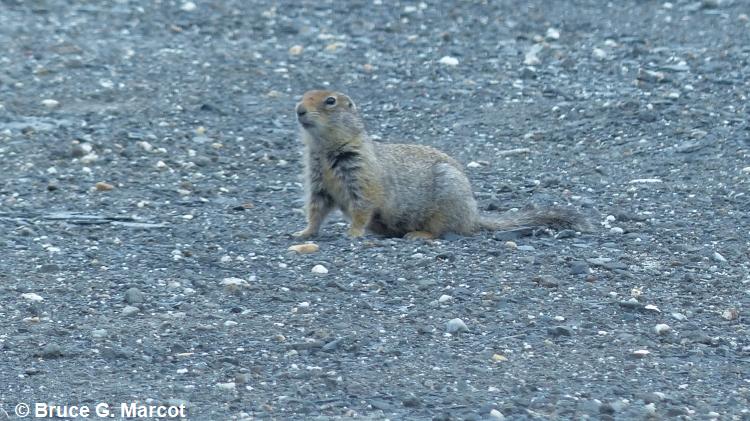|
Explanation: Please
view the above video ... then ask, What is this squirrel doing? And why? This
is an Arctic ground squirrel, which is found widely in the far northern
latitudes of North America and the Russian Far East. You'd think we know
pretty much all about this very active critter. But perhaps not. I
watched this particular squirrel for some time, in a gravel pullout along the
Dalton Highway of northern Alaska, in North Slope Burrough just south of
Atigun Pass . He/she was continually scrounging around the gravel.
At first, I thought it was going after insects, or looking for food particles,
but it was not eating anything solid.

This individual seems to be using the gravel as a salt lick, that is,
as a source of mineral nutrients needed for health. Salt licks, also
called mineral licks, are well-known phenomena with parrots in the tropics,
butterflies doing "puddling" behavior, bats' use of mud holes
created by larger mammals (Ghanem and Voigt 2014), and even snowshoe
hares and barren-ground
caribou in the far North (Kielland et al. 2018, Calef and Lortie 1975), and among other species. But this is the
first time I observed an Arctic ground squirrel in such behavior. Further,
there seems to be little to no knowledge, evidence, or studies of this
behavior in this
species. Consuming
minerals from soil, stones, and other terrestrial non-vegetation sources is
also known as geophagy, "earth-eating." Geophagy,
including use of salt licks and mineral licks, has been studied as one aspect
of how animals can influence and alter the environment as "ecosystem
engineers" (Butler 1995). So
my thanks to how this chance encounter during an Arctic expedition led me to
further exploring an unexpected behavior in an unassuming little rodent, and
to learning much more. Such can be the fortunes of natural history
observations!

Information:
Butler, D. R. 1995. Zoogeomorphology: animals as geomorphic agents. Cambridge University Press, New York, NY. 239 pp.
Calef, G.W. and G.M. Lortie. 1975. A
mineral lick of the barren-ground caribou. Journal of Mammalogy
56(1):240-242.
Ghanem, S. J., and C. C. Voigt. 2014. Defaunation of tropical forests reduces habitat quality for seed-dispersing bats in Western Amazonia: an unexpected connection via mineral licks. Animal Conservation 17:44-51.
Kielland, K., D. DiFolco, and C. Montgomerie.
2018. Dining dangerously: geophagy by snowshoe hares. Ecology
100(3):e02555. Acknowledgment:
My thanks to Donna DiFolco, Biological Technician
with the National Park Service, for sharing her work on use of mineral licks
by snowshoe hares (see link in the above text, and the publication citation
above in Information). My thanks also to research wildlife
biologist colleague Dr. Damon Lesmeister with whom I shared this particular
Alaskan adventure.
|



